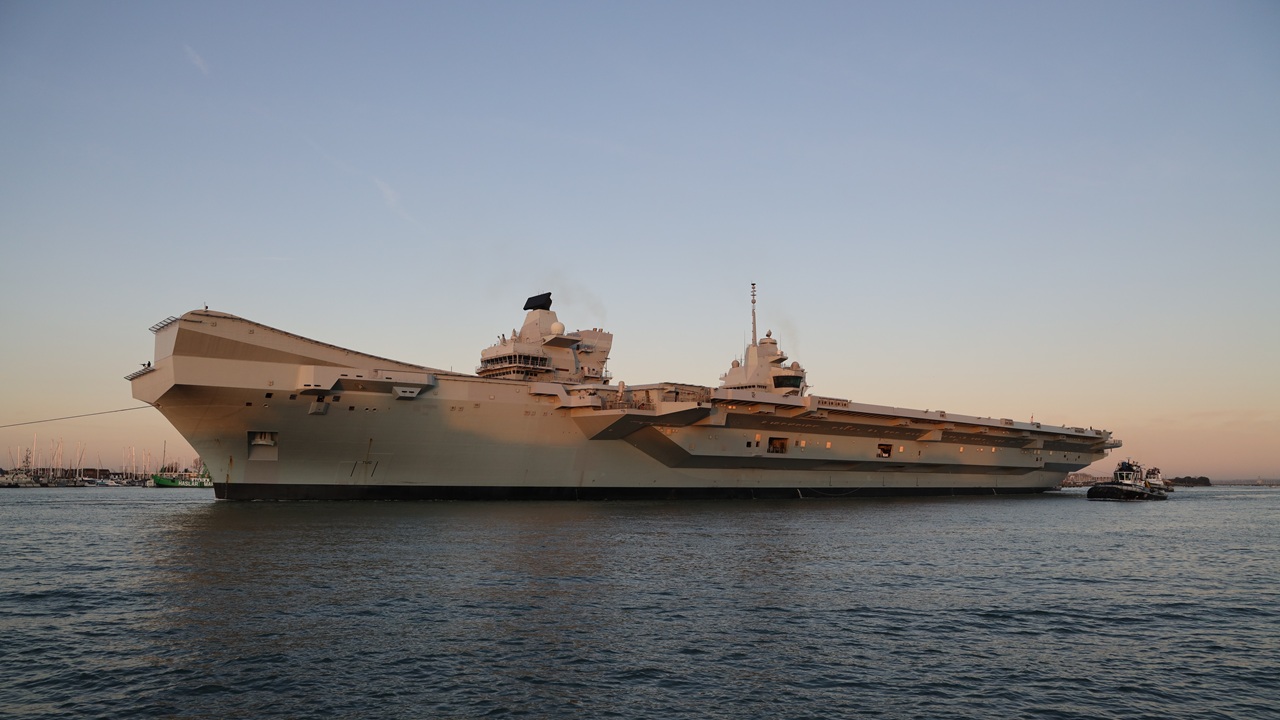The British F-35B Lightning, which had been stranded in India for over a month due to a hydraulic failure, has successfully rejoined the HMS Prince of Wales after undergoing repairs. The aircraft departed from Thiruvananthapuram International Airport on July 28, 2025, returning to the Royal Navy’s flagship during its ongoing deployment in the Indo-Pacific region.
The F-35B, tail number ZM168, was part of HMS Prince of Wales’s strike group engaged in Operation Highmast when it encountered mechanical issues on June 14, 2025. The fighter jet was forced to divert to Thiruvananthapuram after a hydraulic failure grounded it during joint operations with the Indian Air Force. Initial attempts to fix the problem were unsuccessful, prompting the dispatch of a larger engineering team from the UK and the United States.
A team of approximately a dozen engineers and mechanics arrived in India on July 7 to address the issue. Following a two-week period where the aircraft was kept in remote parking at the airport, it was moved to a secure hangar where repairs were completed by July 22.
According to UK-based Navy Lookout, there was no immediate urgency to return the F-35B to the carrier group. The aircraft was reportedly well-guarded by British and Indian personnel during its stay in India. Nevertheless, the lengthy repair process raised concerns regarding the readiness of British defense capabilities.
The decision to have the F-35B rejoin the carrier may have been influenced by logistical considerations, as India is strategically located approximately halfway between the UK and northern Australia, where HMS Prince of Wales was headed. The UK Ministry of Defence may have aimed to showcase its operational capabilities by facilitating the direct flight from Thiruvananthapuram to Darwin, Australia, with in-flight refueling provided by an RAF Voyager tanker.
The incident has drawn criticism, with the Royal United Service Institute labelling it a “PR disaster” that could undermine public trust in the British military. Social media has amplified the situation, with humorous memes circulating, including one from the Kerala tourist board that jokingly suggested the F-35B was reluctant to leave the area.
In a broader context, such mishaps can be exploited by foreign entities to question the reliability of British military hardware. The Ministry of Defence is likely seeking to mitigate any negative perceptions following the F-35B’s return to the HMS Prince of Wales.
Upon its return, the F-35B found the flight deck of the aircraft carrier bustling with activity, as US Marine Fighter Attack Squadron 242 (VMFA-242) was also conducting operations alongside British forces. The US Navy and Royal Navy are currently participating in the Talisman Sabre 2025 multinational exercises, which involve coordinated operations between multiple squadrons.
The presence of additional F-35s on the HMS Prince of Wales underscores the collaborative efforts between the UK and US military forces. The US Marine Corps personnel, who have joined the British carrier’s operations, are part of the 31st Marine Expeditionary Unit, which includes various amphibious assault vessels.
As the Royal Navy continues its strategic operations in the Indo-Pacific, the successful return of the F-35B signifies a recovery from the recent setback, though the implications of the incident may linger in discussions surrounding the reliability of military assets.





































































